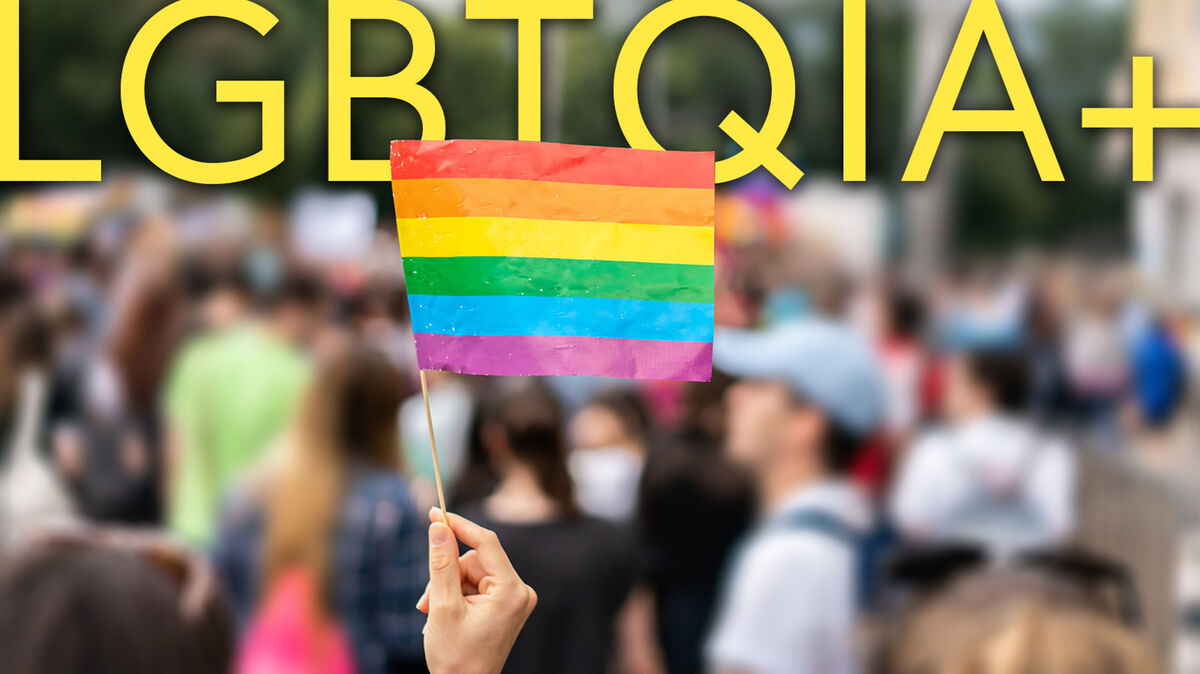
LGBTQIA+ is an inclusive term that includes people of all genders and sexualities, such as lesbian, gay, bisexual, transgender, questioning, queer, intersex, asexual, pansexual, and allies. While each letter in LGBTQIA+ stands for a specific group of people, the term encompasses the entire spectrum of gender fluidity and sexual identities.
What Does LGB Mean?
The letters LGB stand for lesbian, gay and bisexual. These terms mean:
lesbian - term for women sexually and romantically oriented toward other women
gay - any person attracted to the same gender
bisexual - those who are sexually and romantically attracted both to men and women
What Does the T in LGBTQIA+ Mean?
The T in LGBTQIA+ can have several different meanings but typically deals with gender identity. Some words have fallen out of favor or their meanings are slightly different depending on the person.
trans - an inclusive term for anyone whose gender identity does not match their sex assigned at birth
transsexual - can mean someone transitioning from one sex to another using surgery or medical treatments; not in common usage
transgender - term for someone who identifies as a different gender than what was assigned on their birth certificate
What Does QIA Mean?
QIA stands for questioning or queer, intersex and asexual. These terms mean:
questioning - when a person is exploring their sexuality, gender identity and gender expression
queer - an inclusive term or as a unique celebration of not molding to social norms
intersex - used for individuals who don’t fit into specific gender norms of woman or man; can also be used for those with reproductive anatomy that isn’t biologically typical
asexual - uses for those who don’t feel sexual attraction to either sex or that don’t feel romantic attraction in the typical way
The + in LGBTQIA+
The plus sign at the end of LGBTQIA+ can include members of other communities, including allies — people who support and rally the LGBTQIA+ cause even though they don’t identify within the community itself. Other identities included in the LGBTQIA+ are:
agender - refers to those who do not identify as any gender at all
demisexual - describes someone who requires an emotional bond to form a sexual attraction
genderfluid - describes one's gender identity as self-expression and not static
graysexual - refers to the “gray area” between asexuality and sexuality
non-binary/genderqueer - a term used for those who do not conform to binary gender identities
pansexual/omnisexual - a term for individuals with desire for all genders and sexes
polyamorous - a term for those open to multiple consensual romantic or sexual relationships at one time
sapiosexual - describes a person who is attracted to intelligence, regardless of a person’s gender identity
two-spirit - a term used by Native Americans to describe a third gender (sometimes included as 2S in the main acronym as LGBTQIA2S+)
Other Terms in the LGBTQ Community
In today’s society, people are challenging social norms associated with relationships, sexuality and gender identity. These people may not be gay, so other terms to describe them were created or popularized.
-
ace - short for asexual
-
bi - short for bisexual or bicurious
-
cis - shortened version of cisgender (a person who identifies as the gender they were assigned at birth)
-
closeted - state of being totally private about one's sexual orientation or gender identity
-
coming out - the act of sharing one's sexual orientation or gender identity with loved ones
-
deadnaming - calling someone by a name they no longer use
-
fluid - term that describes one's sexual identity or gender identity as not set or binary
-
gray-a - short for graysexual
-
pan - shortened version of pansexual
-
per - gender-neutral pronoun for those who do not identify as male or female (short for person)
-
poly - short for polyamory or polyamorous
Be Sensitive With Slang
It’s important to use these and any slang terms you may have heard sensitively. Even when someone outside the LGBTQIA+ community means well, they may unknowingly use one of these words in an offensive way. When in doubt, it’s best to ask someone from the LGBTQIA+ community or check a resource such as GLAAD (Gay & Lesbian Alliance Against Defamation) about the use of these or any slang terms.
The Language of Acceptance
Learning how to speak to and about others, or teach your children to speak about others, with respect should be one’s ultimate goal in communication. For more information about the language of gender identity, check out: